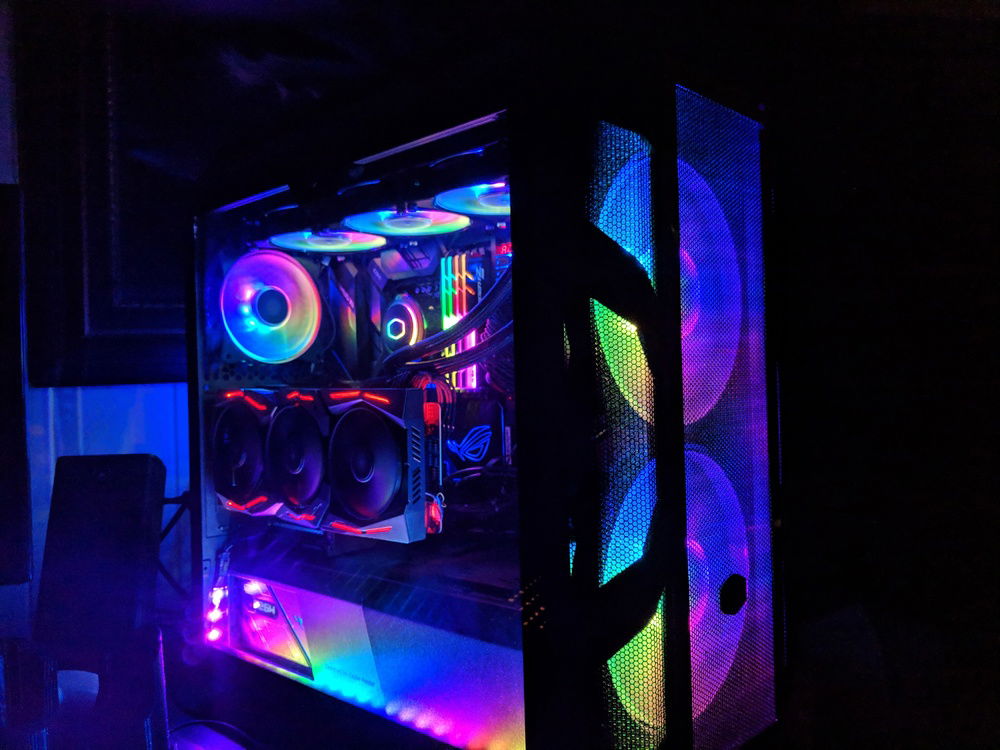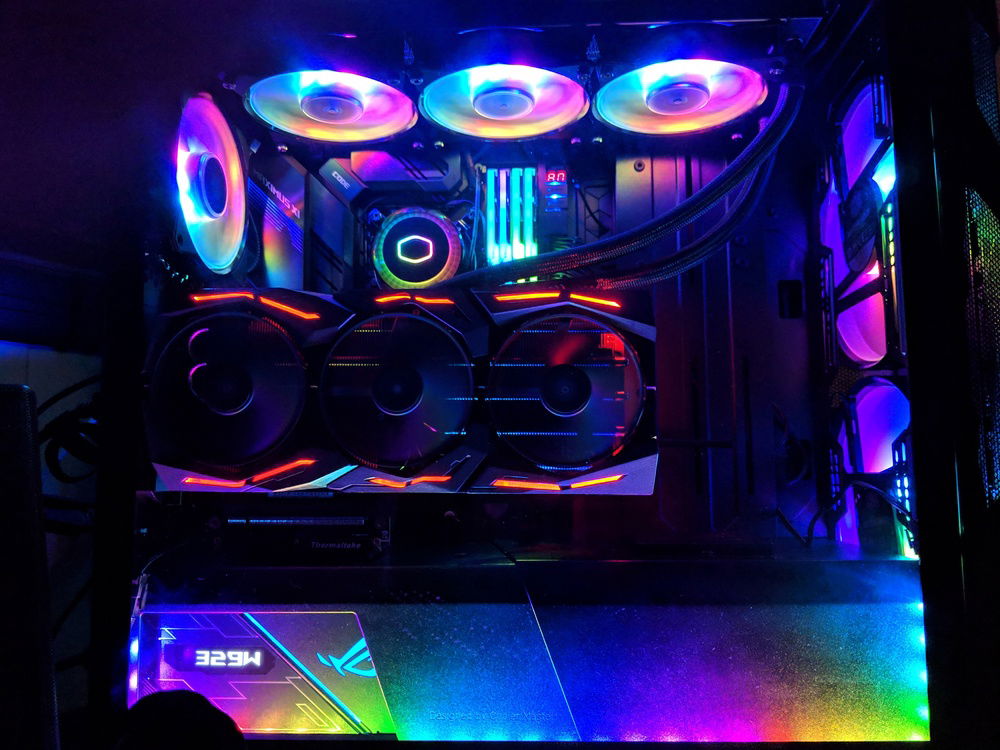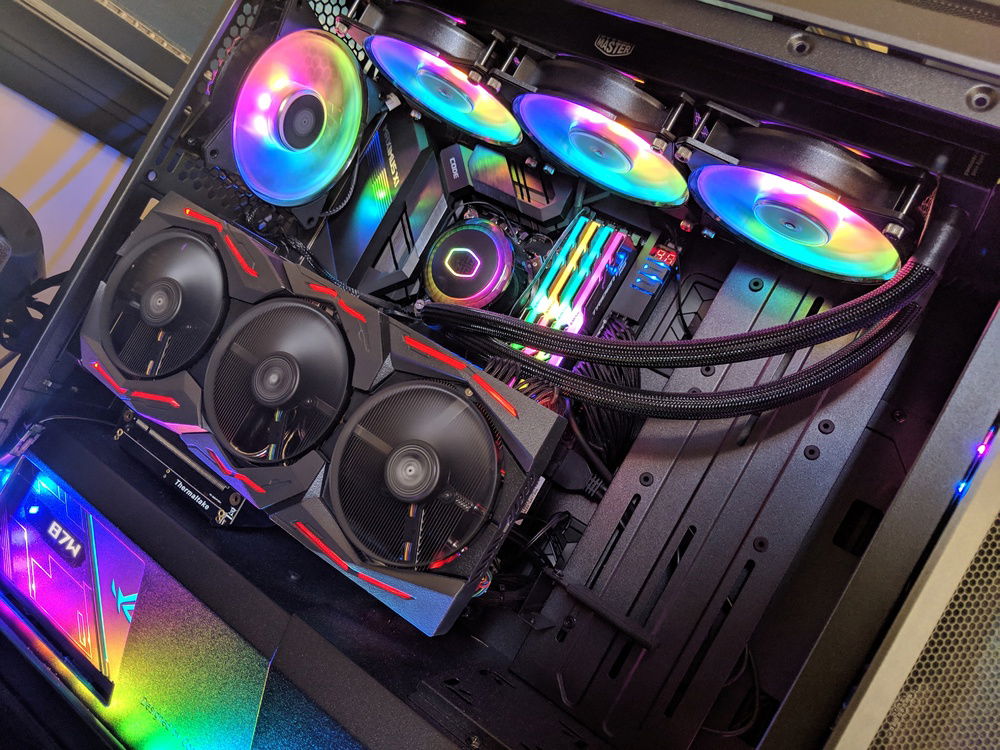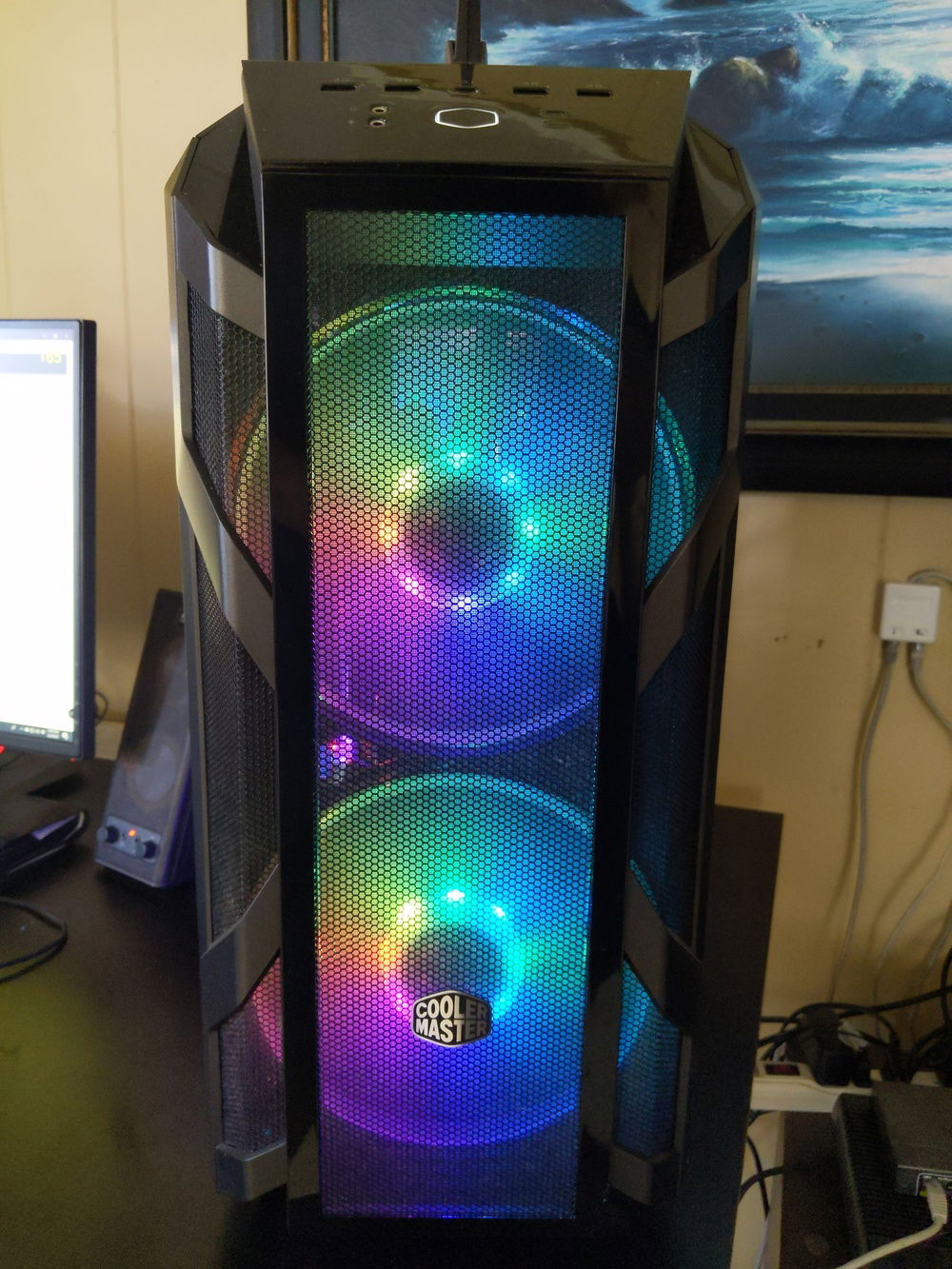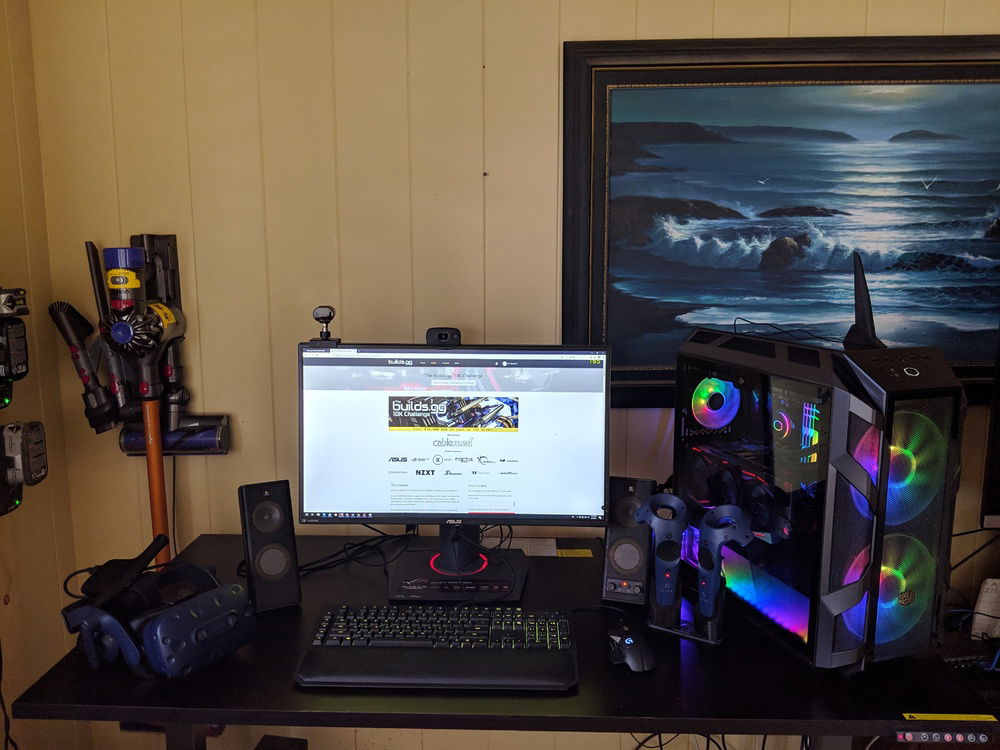ARGB H500M High End VR Build
Packed with addressable RGB lights and spec'd to power high end virtual reality headsets. This H500M build packs the latest and greatest hardware, shy of an RTX Titan of course ;)
The HTC Wireless adapter requires a lot of CPU power and struggled on my old 7700k so I opted for the 9900k which greatly improved performance (apparently it doesn't work with AMD CPUs). With the ASUS ROG STRIX RTX 2080 Ti OC edition, I can really push my 2560x1440 165Hz monitor with G-Sync and up the super-sampling on my HTC Vive Pro. Though I imagine even that might not be enough for the Pimax 8K's dual 3840x2160 displays if I ever decide to get one. In Metro Exodus with RTX on, I was able to get an average of 80-90 FPS. The ROG THOR 850W PSU looks great with the included black sleeved cables and it works well with the PSU window in the H500M letting you know how many watts your computer is drawing.
Getting everything together was a journey, with everything coming at different times since the components just came out or were releasing soon. The first motherboard was DOA (dead on arrival) and the second had physical damage. One of the side glass panels shattered while I was moving it but luckily Cooler Master was able to send a replacement free of charge. You'd think with all the panels and space in the back, cable management would be a piece of cake. But I barely got everything neat and hidden under the panels. Each of the ARGB fans has a 3-pin 5V ARGB plug as well as a 4-pin PWM plug, the 2 200mm fans are 3-pin. Since I had 9 ARGB devices (6 fans, AIO pump, PSU, ARGB strip) getting them all hooked up was a nightmare with some of the cables not reaching without extension cables.
I originally wanted all the ARGB hooked up to the motherboard with Aura Sync, but the motherboard only has 2 3-pin ARGB headers and the Aura Sync software acts as both headers being one zone. Allowing only the GPU, RAM, and ARGB headers to act as 3 distinct zones. Plus the Aura Sync software was terribly slow at updating the colors and made the rainbow effect look like the colors were changing and moving in steps rather than a seamless transition. Eventually I ended up hooking all the lights to the hub included in the MasterLiquid ML360R RGB AIO and using the reset button on the case to change settings.
I use this system with my HTC Vive Pro and play VR FPS games like Pavlov VR. I play for a team called Robo Electric Kitten Team (or REKT for short) and we recently just won the Pavlov VR season 4 championships. We're a small league with about 16 competing teams but if you ever join the PC VR scene and pick up Pavlov, I hope to see you join the league and community.
The HTC Wireless adapter requires a lot of CPU power and struggled on my old 7700k so I opted for the 9900k which greatly improved performance (apparently it doesn't work with AMD CPUs). With the ASUS ROG STRIX RTX 2080 Ti OC edition, I can really push my 2560x1440 165Hz monitor with G-Sync and up the super-sampling on my HTC Vive Pro. Though I imagine even that might not be enough for the Pimax 8K's dual 3840x2160 displays if I ever decide to get one. In Metro Exodus with RTX on, I was able to get an average of 80-90 FPS. The ROG THOR 850W PSU looks great with the included black sleeved cables and it works well with the PSU window in the H500M letting you know how many watts your computer is drawing.
Getting everything together was a journey, with everything coming at different times since the components just came out or were releasing soon. The first motherboard was DOA (dead on arrival) and the second had physical damage. One of the side glass panels shattered while I was moving it but luckily Cooler Master was able to send a replacement free of charge. You'd think with all the panels and space in the back, cable management would be a piece of cake. But I barely got everything neat and hidden under the panels. Each of the ARGB fans has a 3-pin 5V ARGB plug as well as a 4-pin PWM plug, the 2 200mm fans are 3-pin. Since I had 9 ARGB devices (6 fans, AIO pump, PSU, ARGB strip) getting them all hooked up was a nightmare with some of the cables not reaching without extension cables.
I originally wanted all the ARGB hooked up to the motherboard with Aura Sync, but the motherboard only has 2 3-pin ARGB headers and the Aura Sync software acts as both headers being one zone. Allowing only the GPU, RAM, and ARGB headers to act as 3 distinct zones. Plus the Aura Sync software was terribly slow at updating the colors and made the rainbow effect look like the colors were changing and moving in steps rather than a seamless transition. Eventually I ended up hooking all the lights to the hub included in the MasterLiquid ML360R RGB AIO and using the reset button on the case to change settings.
I use this system with my HTC Vive Pro and play VR FPS games like Pavlov VR. I play for a team called Robo Electric Kitten Team (or REKT for short) and we recently just won the Pavlov VR season 4 championships. We're a small league with about 16 competing teams but if you ever join the PC VR scene and pick up Pavlov, I hope to see you join the league and community.
Color(s): Black
RGB Lighting? Yes
Theme: Technology
Cooling: AIO Cooling
Size: ATX
Type: General Build
Contests
This build participated in 1 contest.
| Rank | Contest | Date |
|---|---|---|
| #493 | The builds.gg 10K Challenge | ended |
Hardware
CPU
$ 449.00
Motherboard
$ 349.99
Memory
$ 338.68
Graphics
$ 749.00
Case
$ 279.99
Case Fan
$ 29.99
Cooling
Accessories
$ 25.88
Accessories
$ 299.99
Accessories
$ 54.97
Keyboard
$ 187.79
Mouse
$ 94.99
Approved by:
